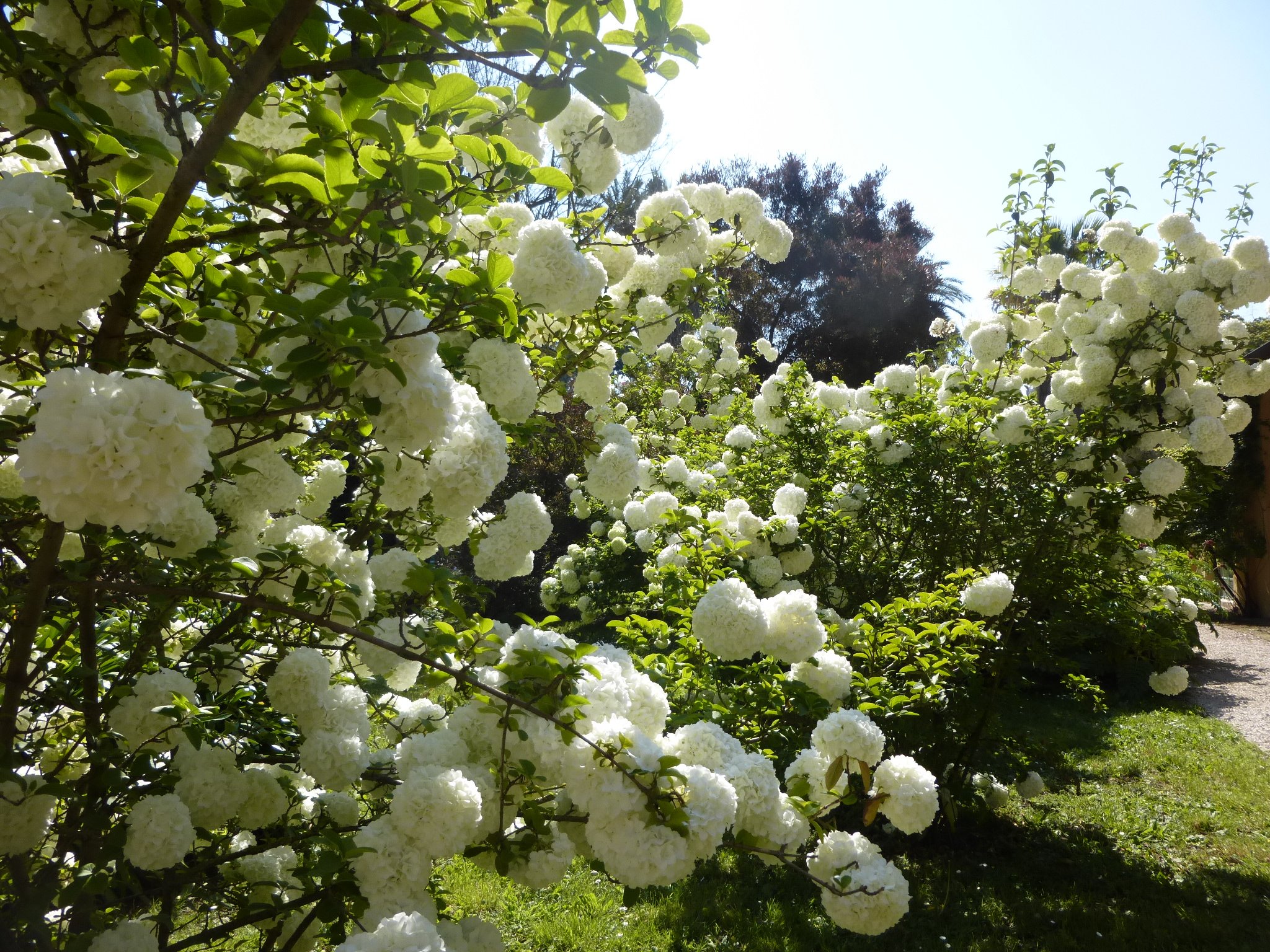Table of Contents
Viburnum Opulus is a native plant bed that grows in woodlands or across shrub borders. The perennial flowering beds can bloom throughout the year. These are lace-cap-like white flowers that start blooming in late spring and continue until early summer. The flowers bloom, and this is followed by the growth of red fleshy fruits by the dawn of autumn. The planting beds are deciduous shrubs that have green leaves. The foliage can turn into a striking red while the leaves fall to the ground during the autumn or fall season.
You require moist soil with either full sun or full shade for these flowering beds to thrive. Once the plant bedding is established, it needs no maintenance or pruning. The flowering beds can attract bees, insects, butterflies, moths, and other pollinators when you grow them in your garden. Let us move on to discover ways and means how to grow Viburnum Roseum right there from scratch.
How Are You Going to Plant Your Viburnum Opulus?
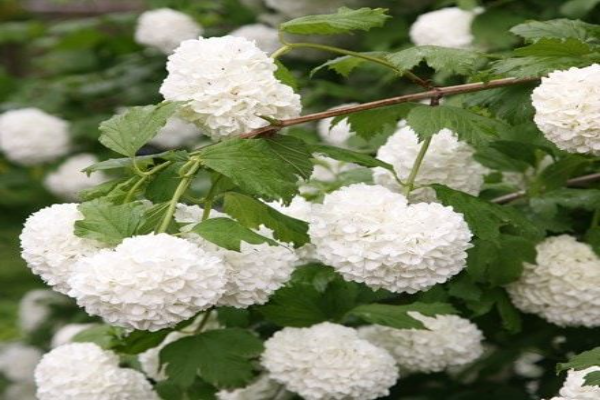
You have outlined steps on how you can grow Viburnum Roseum right there from scratch. Let us look at pointers on how you can get started with the same:
1. Choosing the Best Method for Growing Your Shrubs
The first and foremost step involved here is choosing or deciding on how you are going to get started. You can aim to purchase a young shrub from reputed nurseries or gardens. Else, you can buy the seeds online. Do you know of someone who has already planted the ‘Opulus’ in their gardens? Then, you can make an eco-friendly choice here and save money by propagating the plantings or taking cuttings from them. Henceforth, deciding on how you are going to grow your flowering beds is the most important step in helping you get started.
2. Know More About the Basic Guidelines You Need to Follow
The best time to plant the flowering beds of Viburnum Opulus Roseum is during the autumn season, which falls between September and November. You can also plan to have these beds planted in early spring. These are flowering beds that can adapt themselves to a variety of settings indeed. The factors include temperature settings, soil types, level of sunlight, and so on. Hence, you can work out flexible options for getting your planting done. Once you have zeroed in on the positioning part, all you have to do is get a generous hole done. You can plant your shrub inside the same.
3. How Do You Fill the Ingredients Needed for The Growth of The Plant?
You must fill soil around the base to make sure the plant sits at the same place as where it was in the previous flowering pot or container. You can use soil that is free-draining and moist. Any kind of pH level would suffice. The flowering beds can thrive in locations that have full sun/ full-shade/ partial shade conditions. You must then add enough water that covers the base area of the pot or container you intend to plant them in. You can add enough mulch to cover the base of the pot. Make sure you do not mulch around the base of the shrub.
4. Allocate Ample Spacing in Your Garden Space
The Viburnum Opulus Roseum is a plant that grows tall quite fast. The shrubs grow to a height of 3-4 in height and width across a shorter span of time. Therefore, it is important that you allocate an adequate amount of spacing in your garden or outdoor borders. When you plant the flowering beds by allocating the correct space for them to grow, then you do not have the need to prune them heavily.
5. Check for The Lighting Aspects
These are flowering beds that do well under a full-sun location. Although it is true that these plant beds can grow under shady regions too. This is an easy-to-grow and easy-to-maintain plant bedding. The Viburnum O Roseum can therefore grow under any form of lighting. You can plant these shrubs indoors too. Like on a cool porch or veranda area of your home.
6. What Are the Soil Requirements?
The Viburnum Roseum is a type of planting bed that can grow in any type of nutrient-rich soil with desired pH levels. The soil must be moist and well-draining. You can opt for humus-rich soil. But do not opt for a soil type that is prone to water-logging or compacting. The roots of the shrubs can dampen or get weakened. You can do an annual mulching of the plant around the springtime or so. This way, you can make sure that the organic components of the soil are maintained in a precise manner.
7. How Do You Grow These Shrubs in Containers?
When you plant the shrubs in indoor pots or containers, you may have to carry out extensive pruning of the shrubs. This is because these shrubs grow typically fast and can outgrow the containers in no time. As the shrubs grow larger and contribute to their faster rate of growth, these are plant beddings that cannot take into container-growing. However, if you are keen you want to grow these plant beds in containers, you can choose a dwarf variety, say Dwarf Hydrangea, instead. These are planting shrubs that can grow at a much-controlled pace in fixed containers.
8. How Do You Prune These Shrubs?
Viburnum O’ Roseum is a type of flowering shrub that does not need an extensive level of pruning. Cutting back of roots is therefore not recommended unless and until the shrubs have grown too dense into a hedge. You can have a light level of pruning done just to remove the dead, damaged, or diseased material of the plants. You can also resort to hard renovation pruning as and when it is required. Gardeners usually prefer to take out some of the branches of the plant to let it breathe for a while. Decorative under-story planting can also be done to add ornamental value to your homes or properties.
9. Method of Propagating
Viburnum Roseum produces flowers that are known as guelder roses. You can propagate the flowers using soft or semi-hardwood cuttings. In fact, softwood takings are usually procured during spring and early summer, wherein the stalks are relatively tender and soft. These are flexible stems of new growth which must root instantly. Semi-ripe cuttings can be taken during summer or early autumn.
10. Look for Common Problems that May Arise
This is a plant that usually is easy to grow and maintain. There are fewer incidences of diseases or problems the planting beds are impacted with. However, aphids and Viburnum beetles usually create holes in the leaflets of the plant. These are typically easy to handle in an organic garden. You can introduce natural predators into the growing areas of the plant so that you create a natural balance in your garden spaces.
What Are the Different Varieties of Viburnum Roseum for You to Choose From?
Let us now move on to discover the different varieties of species on Viburnum Opulus planting beds you can suitably look for:
1. Burkwood Viburnum
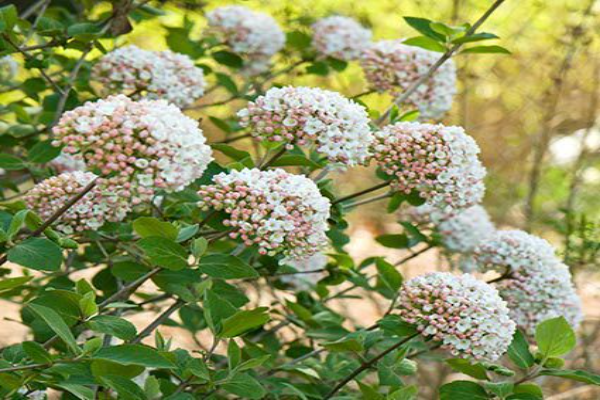
The Burkwood Viburnum produces flowers that are full of fragrance. These flowers look like a cluster of balls that are put together. You may have to plant these shrubs together to attract a better level of pollination in your gardens. The planting beds produce fruits when the flower blooms mature. These are flowering plants native to Asia. These are evergreen shrubs that have oval and dark green leaves. The foliage turns maroon during the fall season. During mid-spring, the buds are red or pink in colour. These buds turn into delicate white flowers once they bloom fully. The plants can grow to a height of 8-10 m.
2. Cinnamon Viburnum
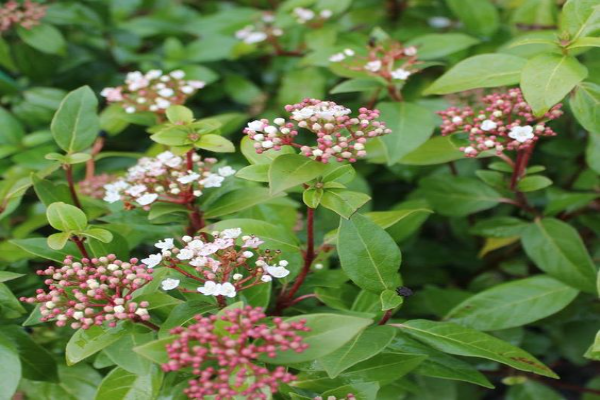
The Cinnamon Viburnum are shrubs that produce leaves that are evergreen in nature. The leaves are similar to that of a camphor tree (Cinnamomum Camphora). There is a speciality feature attached to the leaves that grow in the shrubs that are native to Western China. The shrubs can grow to a height ranging between 10-20 feet. The large leaf stalks and the open flower clusters are features that make the plant unique.
3. David Viburnum
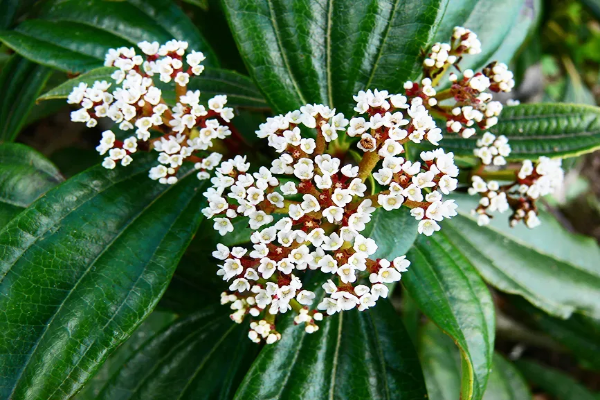
The David Viburnum is a plant bedding that is named after its discoverer. It was Jean Pierre Armand David who had discovered this particular flowering plant, and hence the flowering bed is named after him. The leaves are dark and glossy in nature. The sparkly white flowers add glory to flowering beds on the whole. At the end of the maturing period, the planting beds give away blue or turquoise-shaded fruits. The shrubs are native to Western China and grow to a height ranging from 2-5 feet.
4. Henry’s Viburnum
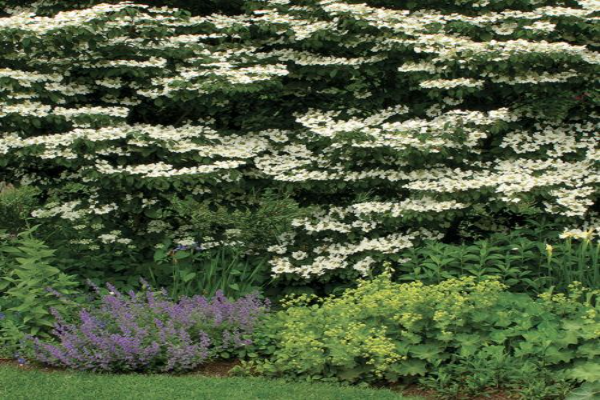
The Henry’s Viburnum shrubs can grow into smaller trees in the longer run. The shrubs establish a single trunk when you prune competing plants or weeds off the growing area of the planting beds. This is a moderately fast-growing shrub that was invested in by a leading botanist, namely Augustine Henry. And that is why this shrub has been named after him. The shrubs native to the South-Western part of China can grow to a height ranging from 7-15 feet. The leaves are reddish while young and turn green. The shrubs can attract bees, butterflies, and other pollinators due to the fragrance the flowers emit.
5. Korean Spice Viburnum
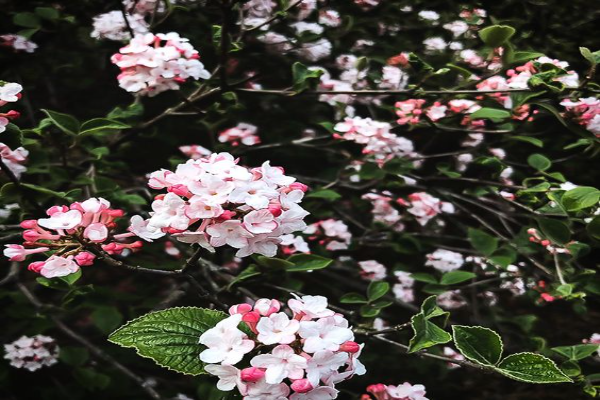
The Korean spice is a shorter variety of the Viburnum genus. These are shrubs that grow at a height ranging from 2-6 feet on average. You get a mix of vibrant-looking pink and white flowers that can lend fabulous looks to your gardens. These are deciduous shrubs that change shades during the fall season. The waxy flowers with bright red berries turn black. The flowers provide a beautiful fragrance for gardeners to fall in love with. You can have these planting beds done near the window or patios of your home to enhance the visual effects of your landscape.
To Summarize!
The Viburnum Roseum is, therefore, easy to grow and maintained shrubs that provide exotic looks to your garden spaces. The flowers give away a lot of fragrance, while the fruits can be edible too. Most of the varieties of Viburnums are native to China. The English gardens, too, grow them as the planting beds are versatile to grow in soil of any pH level.
These are shrubs that can grow in full sun, partial shade, or full shade regions. You can place flower cuttings in vases. Fully bloomed flowers can be decorated in attractive bouquets, too, and you can give them away as presents or souvenirs to near and dear ones.
Without wasting time, just start your gardening journey now.
Frequently Asked Questions (FAQs)
Let us have a look at some of the frequently asked questions with respect to Viburnum Roseum.
How Fast Do These Plants Grow?
These are flowering shrubs that can grow quite fast. They grow in large proportions forming bushes in woodlands or outdoor gardens. The flower cuttings look beautiful in flower vases and commercial properties. Hence, the Viburnum O Roseum is a planting that looks good in gardens and serves ornamental purposes too.
Is Viburnum Roseum tolerant to Pruning?
Viburnum Roseum is not tolerant to an extensive degree of pruning. You can mildly prune these shrubs to remove dead cells or so. Innovative low-task pruning is something you can ideally go in for. These are delicate plant perennials. Therefore, if you prune extensively, the plants may not survive. You can take an opinion from a leading gardener or a horticulturist on how these plants have to be nurtured or cared for.
To What Height Do These Shrubs Usually Grow?
The Viburnum O Roseum grows to a height ranging from 3 or 4 feet to 10-12 feet. Some shrubs are capable of growing like trees too. Then, they cannot be accommodated in pots or containers. You may have to necessarily have them planted outdoors near your fruit gardens or so. You can grow these plants indoors during the initial stages of their growth and development.

